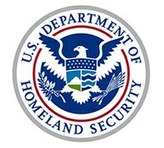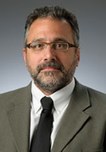
When asked about the role of forensics in society, people might point to TV shows like the CSI series and its offshoots as examples of the type of information that forensics can uncover. At its core forensics takes the adage, “You can’t judge a book by its cover” literally and focuses on understanding materials, processes, and reactions. While the actors in the series usually find their answers within an hour, researchers like Antonio Simonetti, associate professor of civil and environmental engineering and earth sciences, and his team are working at a different pace to carefully build foundational research for the nation’s most immediate needs, as well as for its future.
Funded by a $1.75M grant from the Domestic Nuclear Detection Office of the Department of Homeland Security (DHS), Simonetti and his team are working to provide detailed characterizations of the chemical origins of nuclear materials and samples that have been enriched with radioactive isotopes for either energy production or nuclear weapons manufacture. In short, they are answering the call to action of the DHS, “to create novel cross-cutting research that will enhance the nation’s ability to detect and interdict nuclear or radiological material outside of regulatory control, and otherwise help prevent nuclear or radiological attacks.”

To accomplish this, their investigations include the development of new methods with which to determine the place of origin of nuclear materials. Accurately determining the origin of these types of materials, such as illicit samples that are intercepted by border security, can help curtail illegal trafficking and improve national security. Through this work Simonetti and his team — which includes Peter C. Burns, the Henry J. Massman Professor of Civil and Environmental Engineering and Earth Sciences and Director of the Center for Sustainable Energy at Notre Dame; Amy Hixon, assistant professor of civil and environmental engineering and earth sciences; William Kinman, research scientist and leader of the Nuclear and Radiochemistry Group at Los Alamos National Laboratory (LANL); one postdoctoral researcher; two graduate students; and 10 undergraduates — will be examining specimens using state-of-the-art instrumentation both at Notre Dame and at LANL. They will work to identify how the materials have interacted with the environment, how they age in different environments, and how their unique signatures change over time.
Experiments will involve subjecting the uranium-bearing materials to water, the universal solvent, at different temperatures. This process, which is called alteration, changes the original chemical signature of a nuclear material. Hence, understanding these processes is critical in determining the original chemical signature of nuclear samples, which ultimately results in more accurate determination of the materials’ origin. With this information in hand pertinent government agencies can take appropriate actions to deal with the trafficking and manufacture of these materials. Instruments, on campus and at LANL, to be used throughout the research include a multicollector-inductively coupled plasma mass spectrometer that is coupled with a laser ablation system, which can analyze materials down to the 10s to 100s of micron scale (1 micron = 1 x10-6 meter); a secondary electron microscope, which is used to visualize and chemically characterize samples at the millimeter-to-centimeter scale; and a thermal ionization mass spectrometer.
Simonetti believes Notre Dame was selected for this program in large part because of the previous successful nuclear forensic work conducted by himself, Burns, and Bruce McNamara of the Pacific Northwest National Laboratory, as part of a National Nuclear Security Agency grant. That work focused on characterizing Trinitite, a glass material that was formed from the testing of the Trinity Bomb in the White Sands Proving Ground in 1945. Their work demonstrated that forensic capabilities could detect the bomb signature within the blast material.

“What is as exciting to us as researchers partnering with Los Alamos and looking at this vital issue,” says Simonetti, “is the responsibility and opportunity to work with postdocs, graduate students, and undergraduates. It is the ideal way to train the next, much needed, generation of nuclear forensic scientists, especially those specializing in chemistry related to radioactive materials.”
Originally published by Nina Welding at engineering.nd.edu on September 22, 2014.